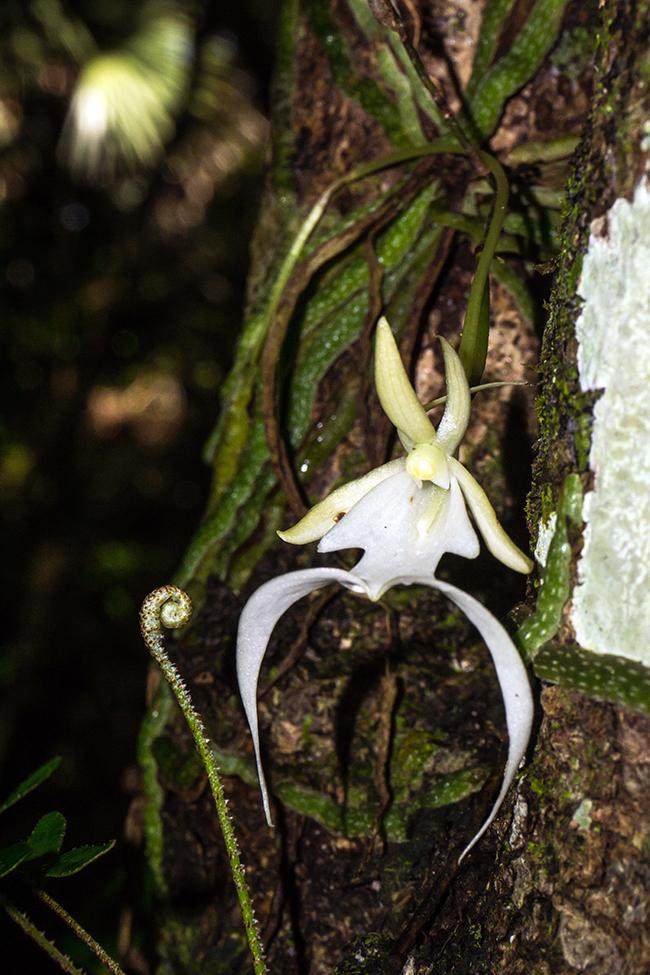Although orchids are the largest family of flowering plants in the world with over 25,000 species known and many more likely in existence, their rare beauty make them a target for over-collecting. As a result, many of the orchids of South Florida have become rare and endangered because of this. One of those rare orchids is the ghost orchid, found within Big Cypress National Preserve.

The ghost orchid, Big Cypress National Preserve / NPS file
This national preserve is home to over 30 species of orchids. Like many other orchid species, the ghost orchid requires a specific habitat to thrive. Not only does it need mild temperatures, high humidity, and dappled shade, but this leafless, creamy white flower with photosynthetic roots needs a specific fungus for a symbiotic relationship in which nutrients are provided to the orchid in return for extra sugars to keep the fungus alive. And, the ghost orchid needs a specific pollinator – the sphinx moth – to transfer the orchid’s pollen for continued propagation.
At one time, it was believed only the giant sphinx moth (with a 6-inch / 15-centimeter wingspan) was able to pollinate ghost orchids, but a 2019 National Geographic article indicates difference species of sphinx moth is capable of pollinating this flower.
According to park staff
The ghost orchid's tangled mass of green roots clings tightly to the trunks of various tree species including cypress, pond apple, and maple and is visible year-round.It is distinguished from other species of orchid by the presence of thin white markings dotting its roots. In June and July, at the peak of mosquito season, the ghost orchid blooms. At night, it is pollinated by the sphinx moth, whose long tongue or proboscis allows it to receive a sweet reward of nectar from the flower that is not easily reached by other insects. Ideally, the moth will travel to more than one ghost orchid plant, thus transferring pollen. However, the ghost orchid is a rare and endangered plant species that does not flower reliably.
Habitat destruction and hydrologic changes due to human development in South Florida have been partially responsible for the decline of ghost orchid populations. Also, over-collecting has had a negative impact on this special plant. The ghost orchid is now protected in many public land areas in South Florida, including Big Cypress National Preserve. With continued protection, the ghost and other orchids will continue to inhabit the unique mosaic of ecosystems that is South Florida.
According to the University of Florida, there are only about 2,000 ghost orchids known to be growing in the wilds of South Florida.
You can watch a YouTube video by the University explaining research work regarding how best to cultivate ghost orchids and then transplant them into the wilds.





